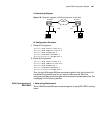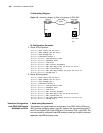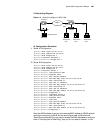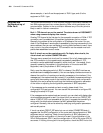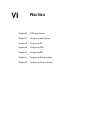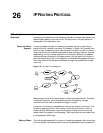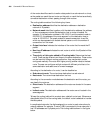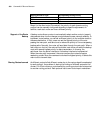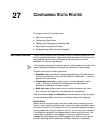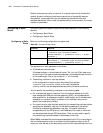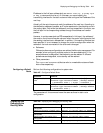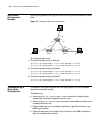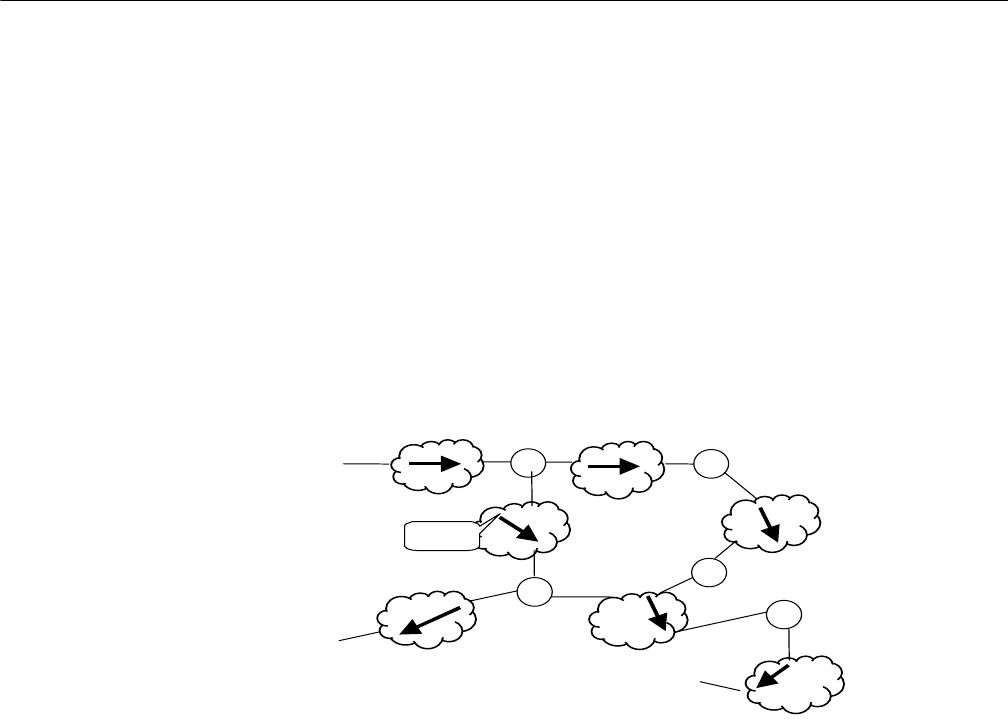
26
IP ROUTING PROTOCOL
IP Routing Protocol
Overview
Routers are used to select the route in the Internet. A router selects a suitable path
according to the destination host address contained in a received data packet, and
sends the data packet to the next router. The last router on the path sends the
data packet to the destination host.
Route and Route
Segment
A router processes the path for transmitting a packet through a network as a
logical route unit, referred to as a hop. For example, in
Figure 142, a packet from
host A to host C passes through 3 networks and 2 routers for a total of 3 hops. It
shows that when two nodes are connected to each other by a network, they are
separated by one hop and are neighbors on the Internet. Similarly, two adjacent
routers are those connected to the same network. So, the hops from a router to
the local network host total 0. In the diagram, the bold arrows represent the hops.
The router does not handle data transmission through the physical links in each
route unit.
Figure 142 Concept of route segment
Networks vary in size, so the actual length of each hop is also different. Therefore,
for different networks, the route segments can be multiplied by a weight
coefficient and then used to measure the length of a path.
If a router in the Internet is regarded as a node on the network, and a hop in the
Internet is regarded as a link, then routing in the Internet is similar to that in a
simple network. Sometimes it may not be optimal to select the route with the
fewest hops. For example, a route passing 3 LAN hops might be much faster than
a route passing 2 WAN hops.
Routing Tables The routing table is essential for a router to transfer data packets. Every router has
one routing table. The routing value in the routing table shows which physical port
B
C
A
R
R
Route
Segment
R
R
R



